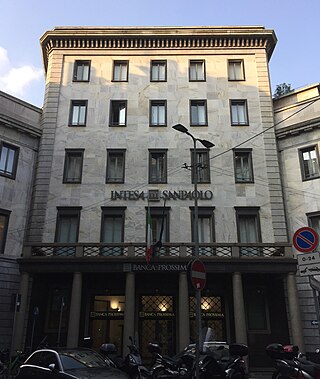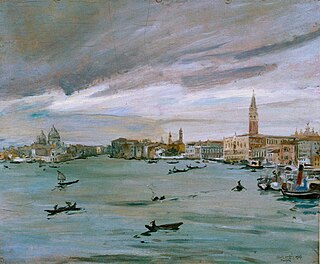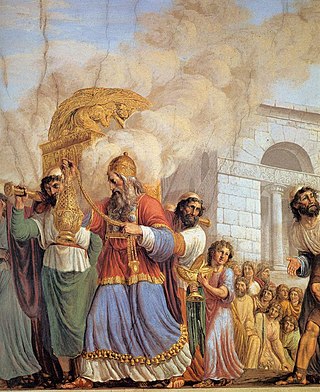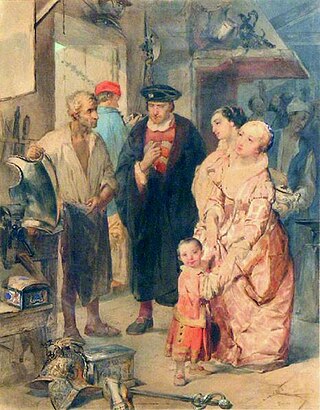Related Research Articles

Banco Ambrosiano was an Italian bank that was established in 1896 and collapsed in 1982. The Vatican-based Institute for the Works of Religion, commonly known as the Vatican Bank, was Banco Ambrosiano's main shareholder. The Vatican Bank was accused of funnelling covert United States funds to the Polish trade union Solidarity and to the Nicaraguan Contras through Banco Ambrosiano.

The Brera Observatory is an astronomical observatory in the Brera district of Milan, Italy. It was built in the historic Palazzo Brera in 1764 by the Jesuit astronomer Roger Boscovich. Following the suppression of the Jesuits by Clement XIV on 21 July 1773, the palace and the observatory passed to the then rulers of northern Italy, the Austrian Habsburg dynasty.

Aldo Carpi was an Italian artist, painter and writer, author of a collection of memoirs concerning his imprisonment in the infamous Mauthausen concentration camp.

VittorioCrivelli was an Italian painter and brother of Carlo Crivelli. His works are similar in style to his brother's, but less accomplished.

Giovanni Cariani, also known as Giovanni Busi or Il Cariani, was an Italian painter of the high-Renaissance, active in Venice and the Venetian mainland, including Bergamo, thought to be his native city.
Rocco Benetton is an Italian entrepreneur publicly known for his role as chief executive officer of championship-winning Formula One Team Benetton.
Wilson Roberto Gottardo, commonly known as just Wilson Gottardo, is a Brazilian former association footballer who played as a defender and the current coach of the Villa Nova-MG. He played in several Brazilian Série A clubs.

Pompeo Mariani was an Italian painter.

The Biblioteca Nazionale Braidense or Braidense National Library, usually known as the Biblioteca di Brera, is a public library in Milan, in northern Italy. It is one of the largest libraries in Italy. Initially, it contained large historical and scientific collections before it was charged with the legal deposit of all publications from Milan. Since 1880, it has had the status of a national library and is today one of the 47 Italian State libraries.

Luigi Ademollo was an Italian painter.

Francesco Didioni was an Italian painter of portraits and genre scenes.

Carlo De Notaris was an Italian painter, active in a Neoclassic style.
Francesco De Lorenzi was an Italian painter, mainly of ornamental fresco decoration.
Felice Abrami was an Italian painter active in Milan, depicting mainly landscapes and genre subjects.
Ermenegildo Agazzi was an Italian painter, active in painting genre, portraits, and landscapes. He began his career painting in a style similar to Scapigliatura painters.
Paolo Araldi was an Italian painter of historical and religious subjects.
Attilio Andreoli was an Italian painter, depicting portraits, genre, and sacred subjects. He painted in oil and acquaforte, often in a realist style.
Carlo Balestrini was an Italian painter. His best-known works are Impressionist landscapes with animals, especially horses.

Alessandro Durini, 6th Count of Monza was an Italian nobleman and painter, primarily in watercolors, depicting historical and genre subjects.

The San Gottardo Altarpiece is an oil on canvas painting by Giovanni Cariani, previously dated to 1520 but now thought to have been begun in 1517 and completed in 1518. This made it perhaps his first major work and certainly the first work he produced in Bergamo after arriving there on 15 August 1517 - St Joseph was the city's patron saint. It was commissioned as an altarpiece by the council of the Scuola di san Giuseppe for the church of San Gottardo. There was tension between the commissioners and the artist and - instead of Cariani - they opted for Lorenzo Lotto and Previtali for the larger works in the church.
References
- ↑ Garollo, Gottardo (1907). Ulrico Hoepli (ed.). Dizionario biografico universale. Editore Libraio della Real Casa, Milan. p. 134.
- ↑ Brera Catalogue 1877.